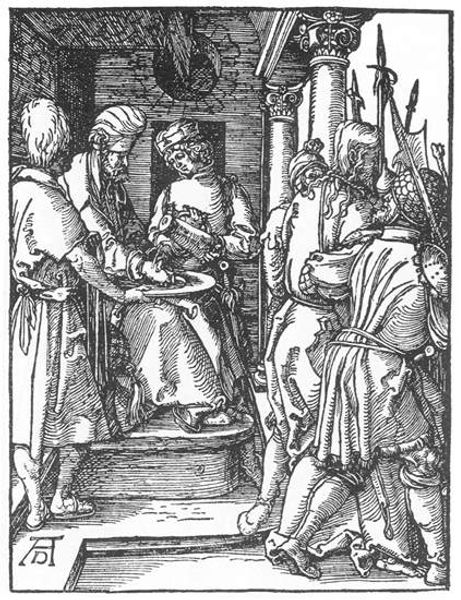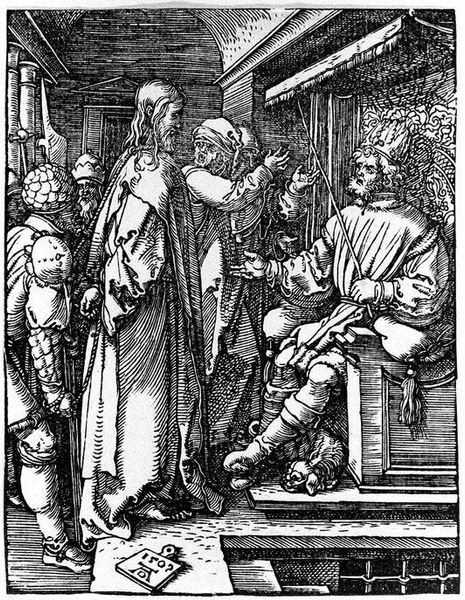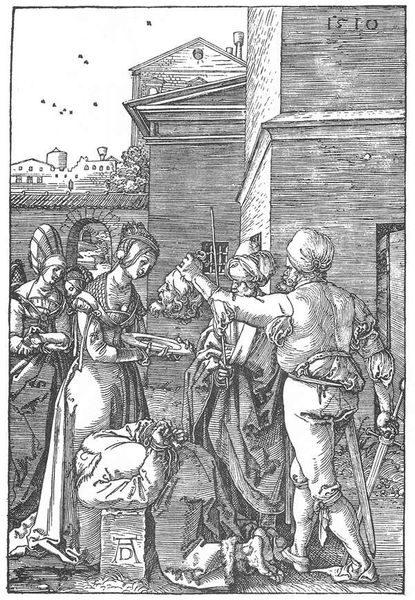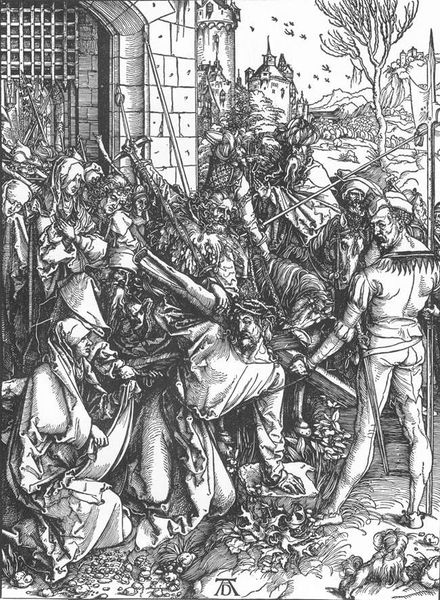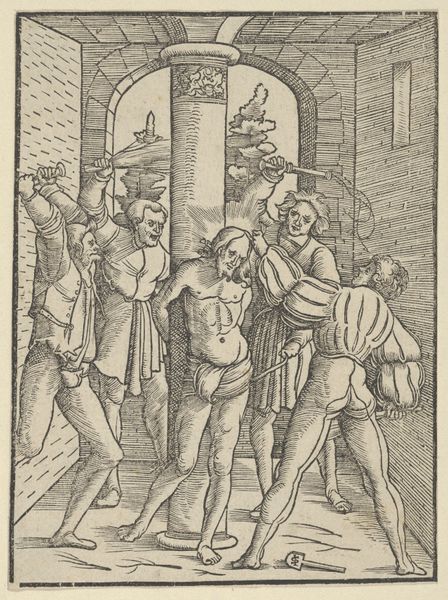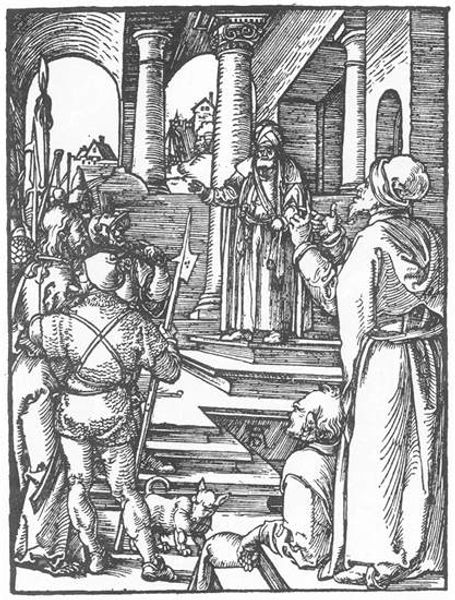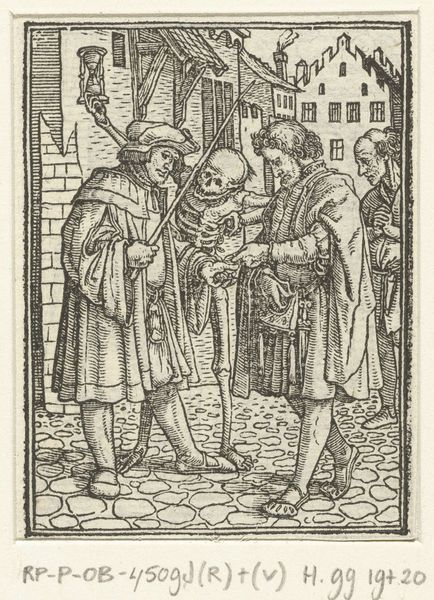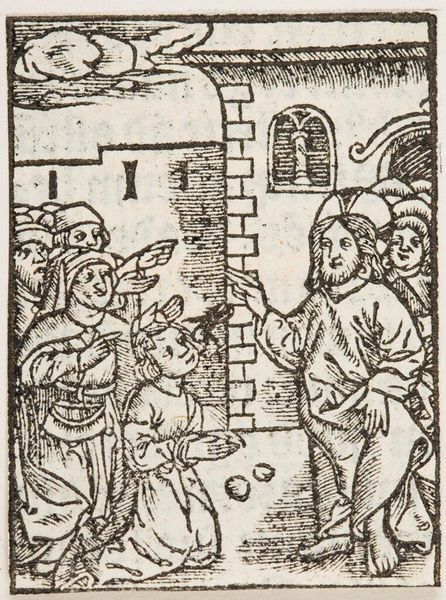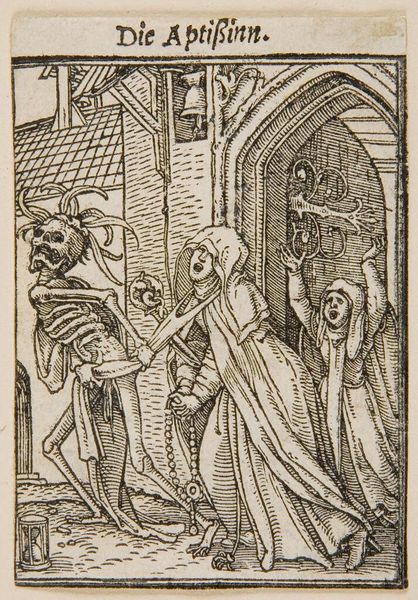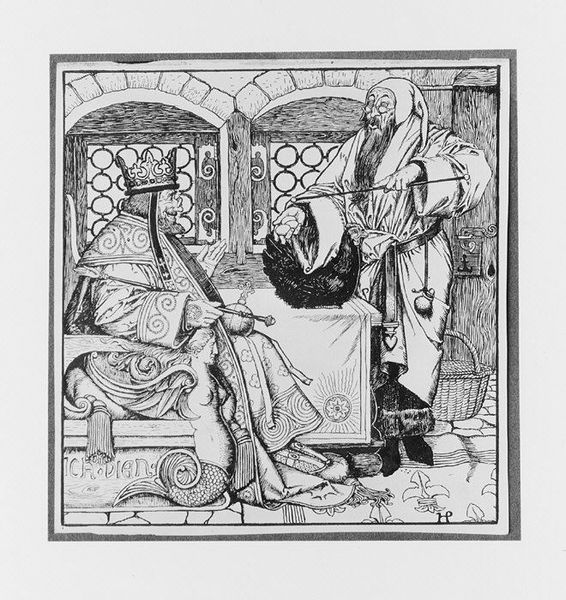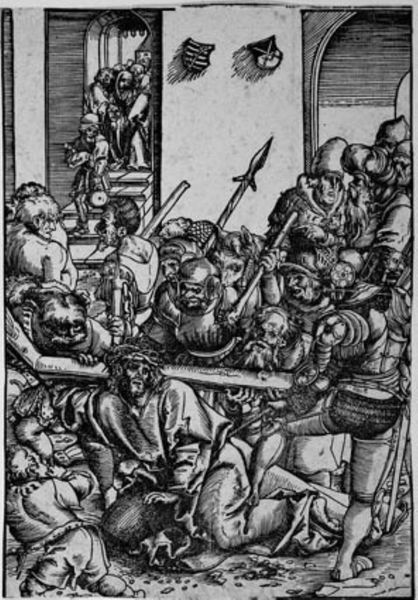
drawing, print, woodcut
#
drawing
#
narrative-art
# print
#
pen illustration
#
figuration
#
ink line art
#
woodcut
#
history-painting
#
northern-renaissance
Copyright: Public domain
This woodcut, "The Ship of Fools," comes to us from the hand of Albrecht Dürer. Look closely at the cap worn by the fool figure, marked by its long ears or horns, a classic symbol of folly. This motif echoes through time, appearing in ancient myths and medieval allegories. The cap, far from being a simple jest, embodies profound cultural anxieties about irrationality and moral failing. Like the ancient Greek satyrs, whose animal features represented untamed instincts, the fool’s headgear signals a departure from reason. Observe how Dürer renders the scene with stark lines. The gesture of the fool, presenting what appears to be a document, also evokes a deep-seated psychological tension— the fear of being judged or found wanting. It is crucial to note that this symbol has not been a linear, static entity; it has resurfaced, evolved, and taken on new meanings in different historical contexts.
Comments
No comments
Be the first to comment and join the conversation on the ultimate creative platform.

